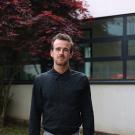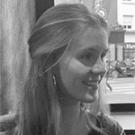
To get a clearer idea of what an end of-study project in Naval & Offshore Architecture entails, here is an example of a thesis:
End of studies internship done at MARIN research center, by Paul B,, general engineer training, class of 2021
Extract :
"Liquid Natural Gas (LNG) terminals are built to offer easy access from deep water to incoming Liquid Natural Gas Carrier (LNGC). Yet, these configurations expose LNGC moored to the jetty to infragravity waves in tune with their natural frequency, leading to great amplitude motions that can endangered installations safety"
End of studies internship done at Subsea7, by Pedro Luiz DAF., general engineer training, class of 2018
Extract :
"The S-lay installation method has been used successfully for decades in shallow water and is used more and more for deep-water projects. With its high level of productivity, this method is preferred to J-lay installation method .Nevertheless, with the increasing number of field development in deep and ultra-deep water (<1500m), limits regarding pipeline integrity (bending moment in sagbend) and vessel equipment’s (especially capacity of tensioner i.e. maximum allowable top tension) are achieved quickly. In order to install pipe with S-lay method as deep as possible, the degree of conservatism (inherited mainly from common practice in offshore industry which are based on shallow water projects) in installation analyses should be decreased. Therefore, several parameters (that can have an impact on top tension and bending moment) have been studied: Drag Coefficient, Added Mass Coefficient, soil Stiffness, Seabed Friction Coefficient and length of pipeline on the seabed"
End of studies internship done at Saipem, by Cyril C., general engineer training, class of 2021
- Full Master Thesis is not available
End of studies internship done at LHEEA, by Charles-Edouard J., general engineer training, class of 2018
Extract :
"The project conducted by LHEEA and CNR-INM focuses on the optimization of hull forms by minimizing the hydrodynamic drag. The optimizer (AMFM) and the modeler (KLE) were both developed by CNR-INM while the solver code used is ISIS-CFD. One aspect of the project is to minimize the calculation cost using automatic mesh refinement in order to limit the cell density in non relevant areas of the domain. The purpose of this work is to perfom a complete optimization chain to minimize the hydrodynamic drag for the DTMB5415."
End of studies internship done at Bureau Veritas Marine&Offshore, by Julieta Logarzo., general engineer training, class of 2018
Extract :
“Offshore units designed to stock gas, as gas carriers and FSRU, are submitted to extreme environmental conditions that cause efforts in the structure. In particular, units composed of independent tanks from the hull are submitted to efforts induced by friction in tanks supports. The present study is focused on the analysis of nonlinearities carried out by contact interaction between hull and tank.”
End of studies internship done at LHEEA laboratory at Centrale Nantes, by Matthieu Abgrall, general engineer training, class of 2024
Extract :
“This study investigates the use of adaptive grid reőnement for RANS-based seakeeping computations. It addresses the primary challenge of deőning an effective and reliable reőnement criterion and procedure for modeling a wide range of regular waves without iterative parameter adjustments.”





























































































































